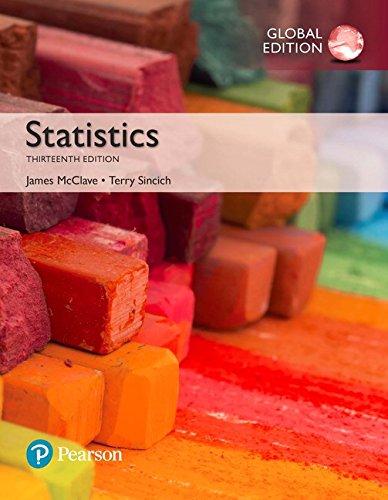Patent infringement case. Chance (Fall 2002) described a lawsuit charging Intel Corp. with infringing on a patent
Question:
Patent infringement case. Chance (Fall 2002) described a lawsuit charging Intel Corp. with infringing on a patent for an invention used in the automatic manufacture of computer chips. In response, Intel accused the inventor of adding material to his patent notebook after the patent LO3 was witnessed and granted. The case rested on whether a patent witness’s signature was written on top of or under key text in the notebook. Intel hired a physicist who used an X-ray beam to measure the relative concentrations of certain elements (e.g., nickel, zinc, potassium) at several spots on the notebook page. The zinc measurements for three notebook locations—on a text line, on a witness line, and on the intersection of the witness and text line—are provided in the following table.
Text line: .335 .374 .440 Witness line: .210 .262 .188 .329 .439 .397 Intersection: .393 .353 .285 .295 .319
a. Use a test or a confidence interval (at a = .05) to compare the mean zinc measurement for the text line with the mean for the intersection.
b. Use a test or a confidence interval (at a = .05) to compare the mean zinc measurement for the witness line with the mean for the intersection.
c. From the results you obtained in parts a and
b, what can you infer about the mean zinc measurements at the three notebook locations?
*d. Use a test (at a = .05) to compare the variation in zinc measurements for the text line with the corresponding variation for the intersection.
*e. Use a test (at a = .05) to compare the variation in zinc measurements for the witness line with the corresponding variation for the intersection.
*f. From your results in parts d and
e, what can you infer about the variation in zinc measurements at the three notebook locations?
g. What assumptions are required for the inferences to be valid? Are they reasonably satisfied?
Step by Step Answer:






